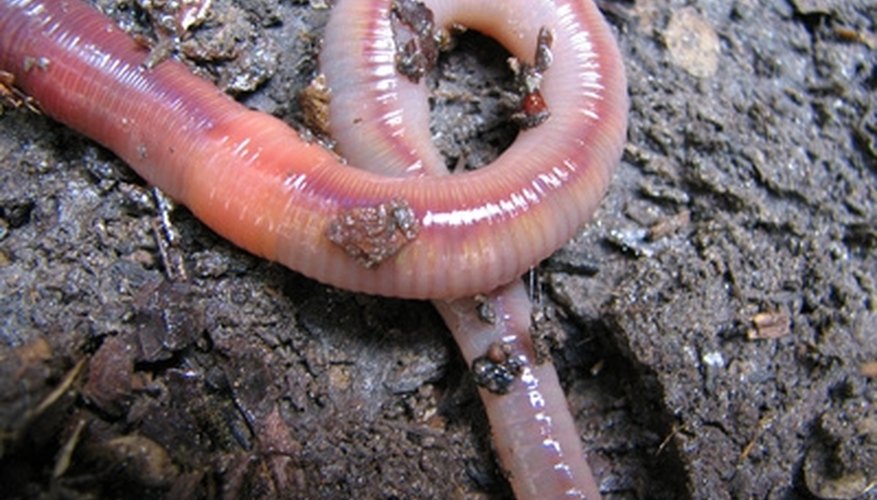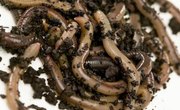
A nightcrawler is a large, plump worm that is desirable for use both as fish bait and for feeding pet reptiles and birds. Many different varieties of nightcrawler exist, such as the African nightcrawler (Eudrilus eugeniae) and the Canadian nightcrawler (Lumbricus terrestris). One of the more popular species to raise is the European nightcrawler (Eisenia hortensis). This type of nightcrawler is tolerant of a wider range of temperatures and conditions than many other types are. They also reproduce and grow quickly.
Items you will need
Worm bin
Peat moss
Water
Soil
Organic scraps
pH meter or test strips
Thermometer
Step 1
Set up a bin in which to house your nightcrawlers. A good starter size is 2 feet by 3 feet and at least 10 inches deep. The bedding--peat moss is best for nightcrawlers--should be moist and about 8 inches deep. The bin will need drainage holes in the bottom of it to allow water to seep out.
Step 2
Add worms to the bin. European nightcrawlers reproduce quickly, so don’t add too many. About half a pound of worms is good for a start. How many worms that is depends on how big they are when you get them, but it should be around 400 to 500 worms. Each worm will lay 1 or 2 egg capsules per week, and each capsule will hatch out 4 to 20 worms.
Step 3
Top the bedding with soil. About 2 to 4 cups of soil spread over the top of the bedding will provide the worms with necessary grit.
Step 4
Feed the worms. You can buy food, such as chicken-egg layer mash, or you can feed them organic scraps, such as lettuce leaves and potato peelings. They can survive on either one, but you may find they grow better with the mash, as it provides more calories and a wider variety of nutrients.
Step 5
Test the pH in your bin once a week. European nightcrawlers need to have a pH of anywhere from 6.0 to 7.0. If the bedding becomes too acidic, it will turn sour, and your worms will die. If the pH drops below 6.0, you can raise it by adding granulated limestone or crushed eggshells.
Step 6
Check the temperature of your worm bins. European nightcrawlers can tolerate a wider range of temperatures than many other varieties, but they should still be kept between 55 and 78 degrees Fahrenheit for best results.
Step 7
Turn the bedding once every three weeks. Check to see how your worms are doing as you do this. Each month, lift out some of the bedding, harvest the worms from it, and return the bedding to the bin. You can sell the harvested worms or use them for bait or pet food. You can also use them to start a second bin.


